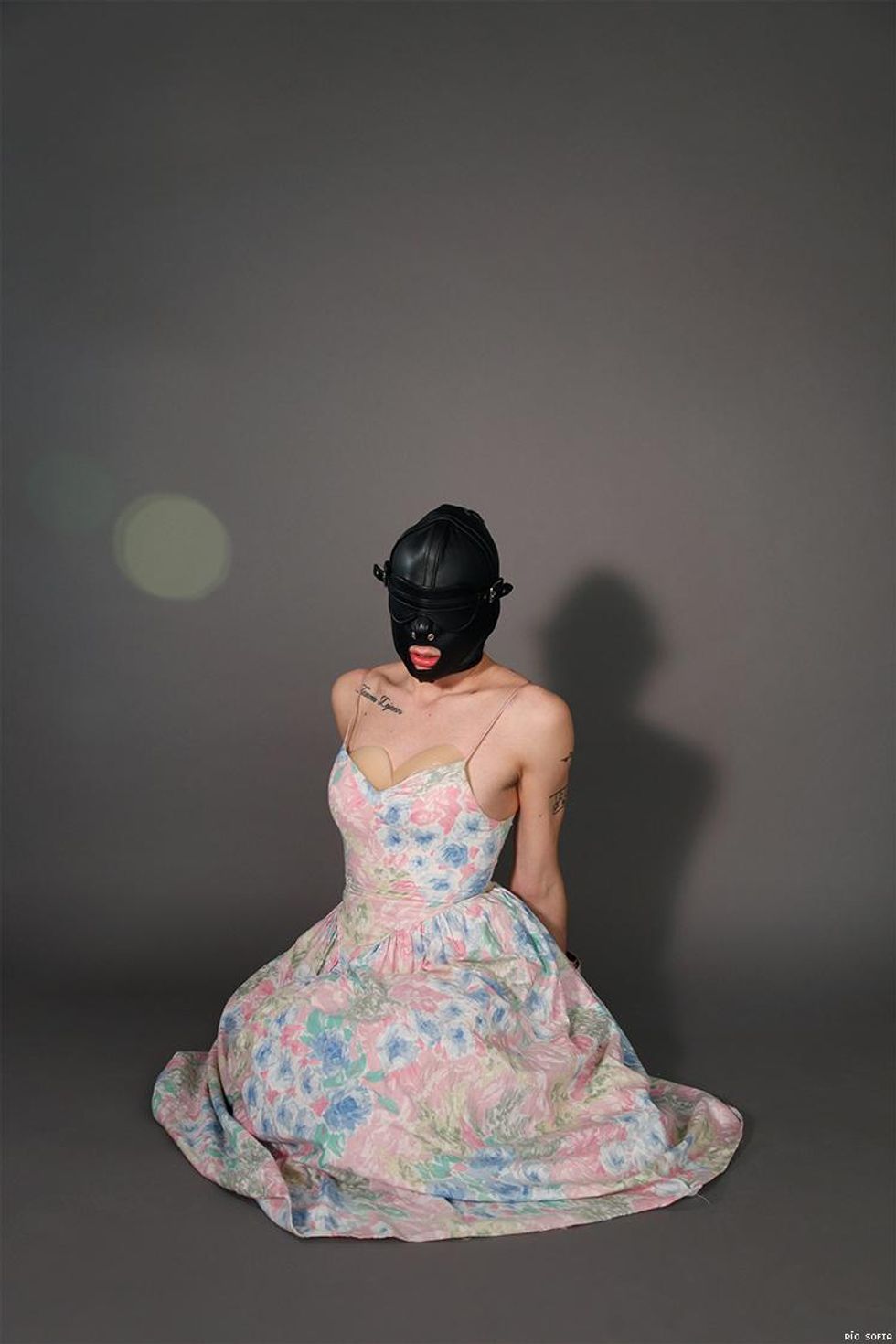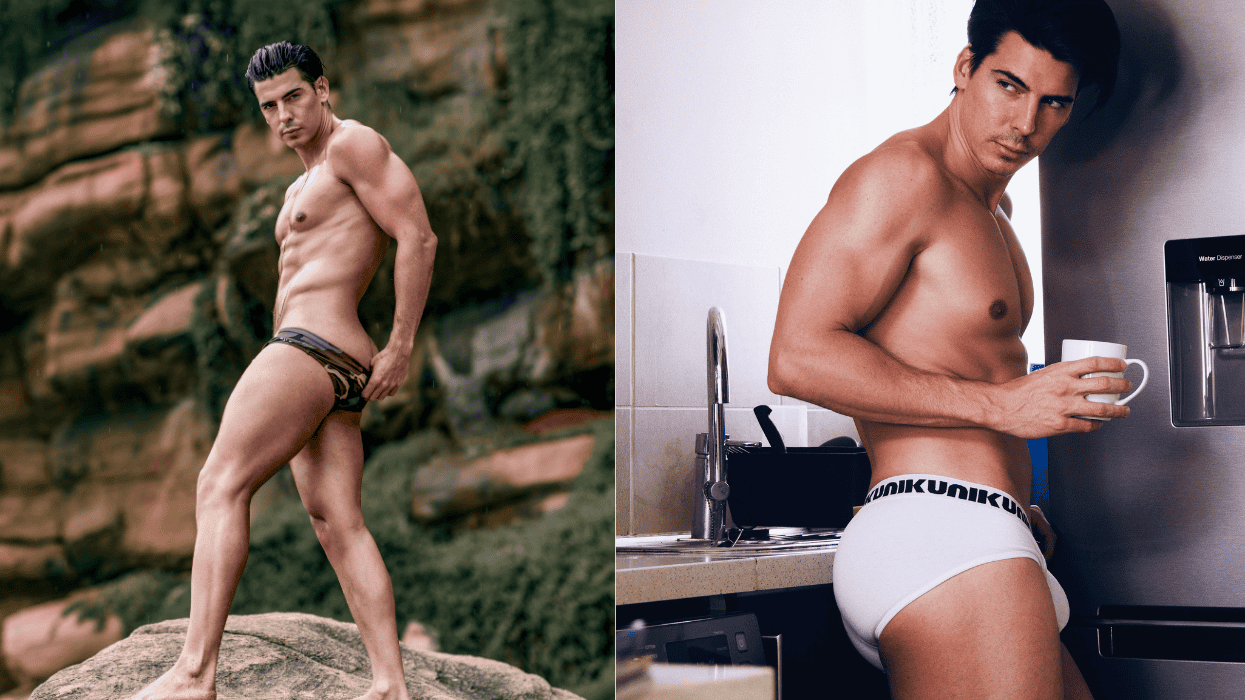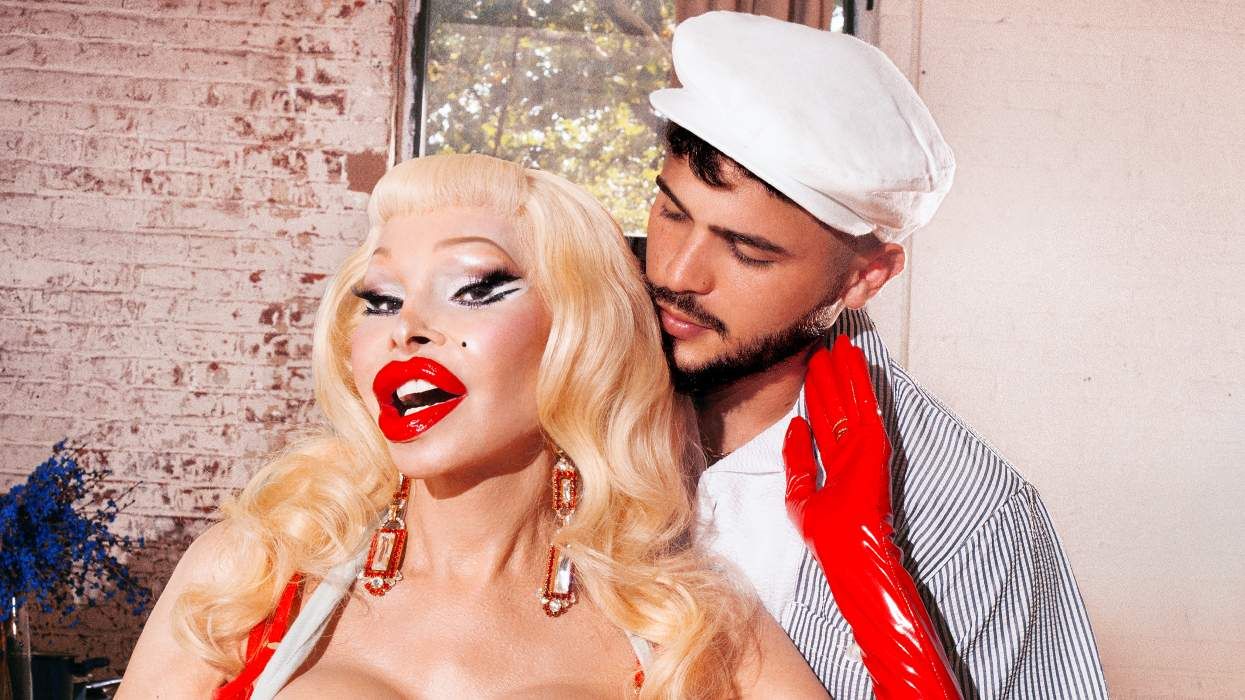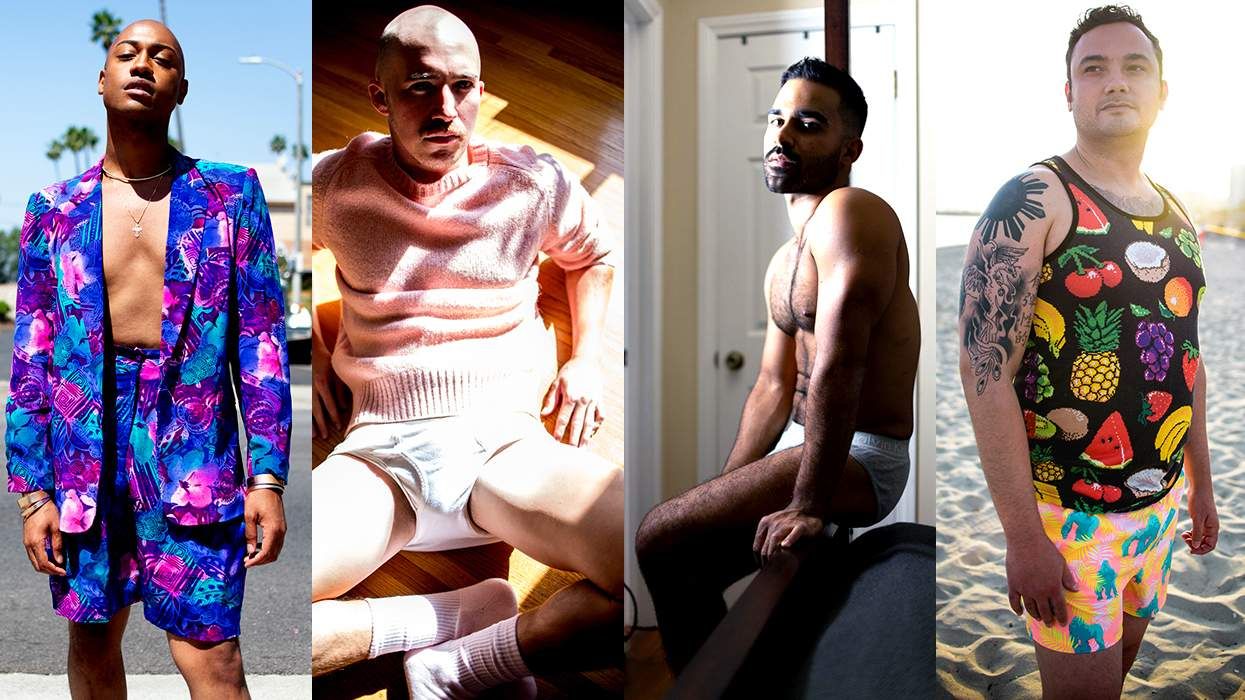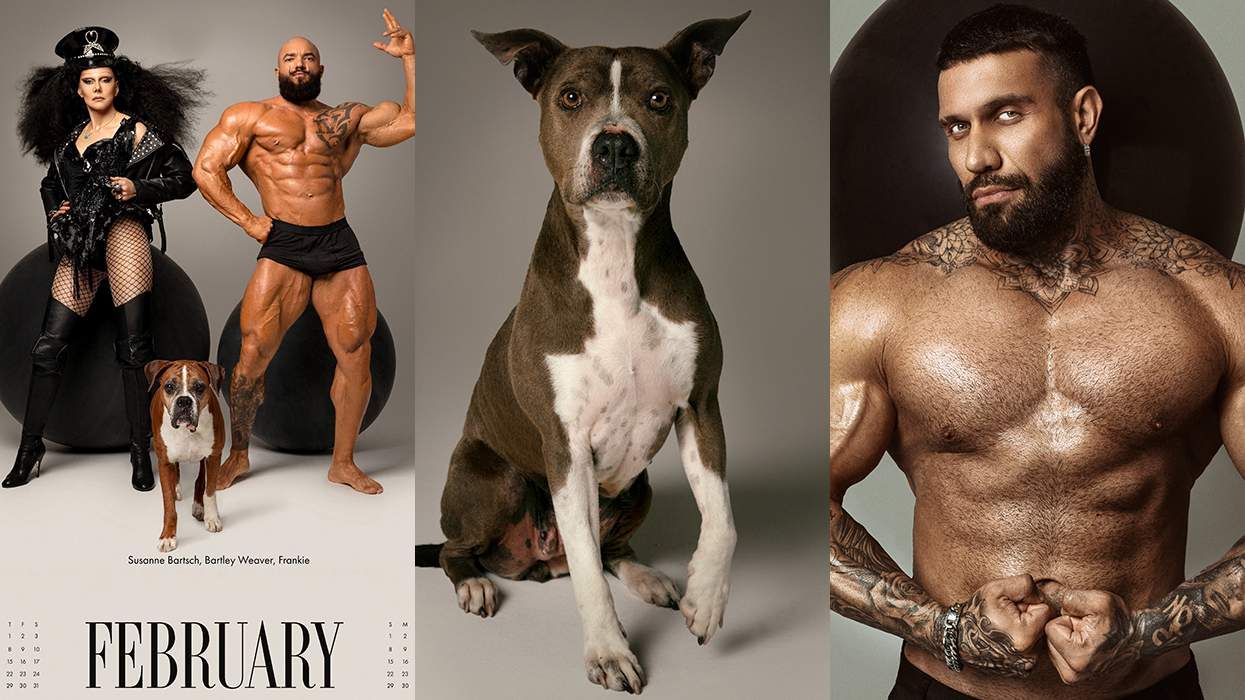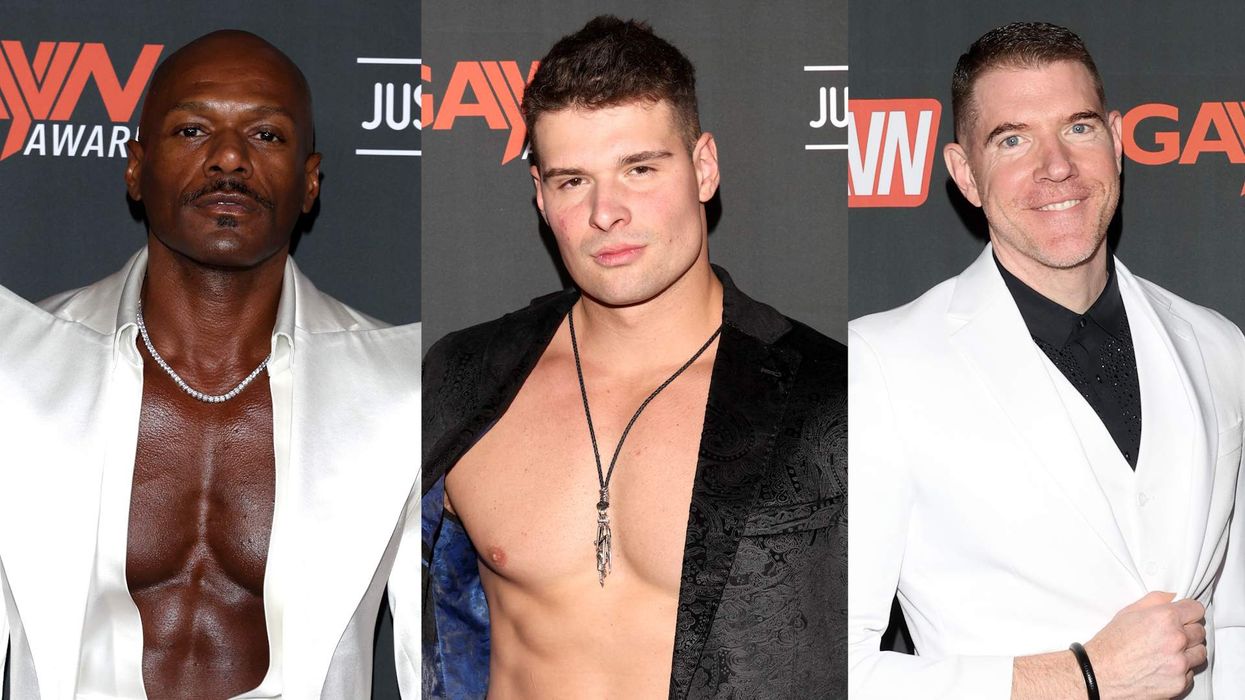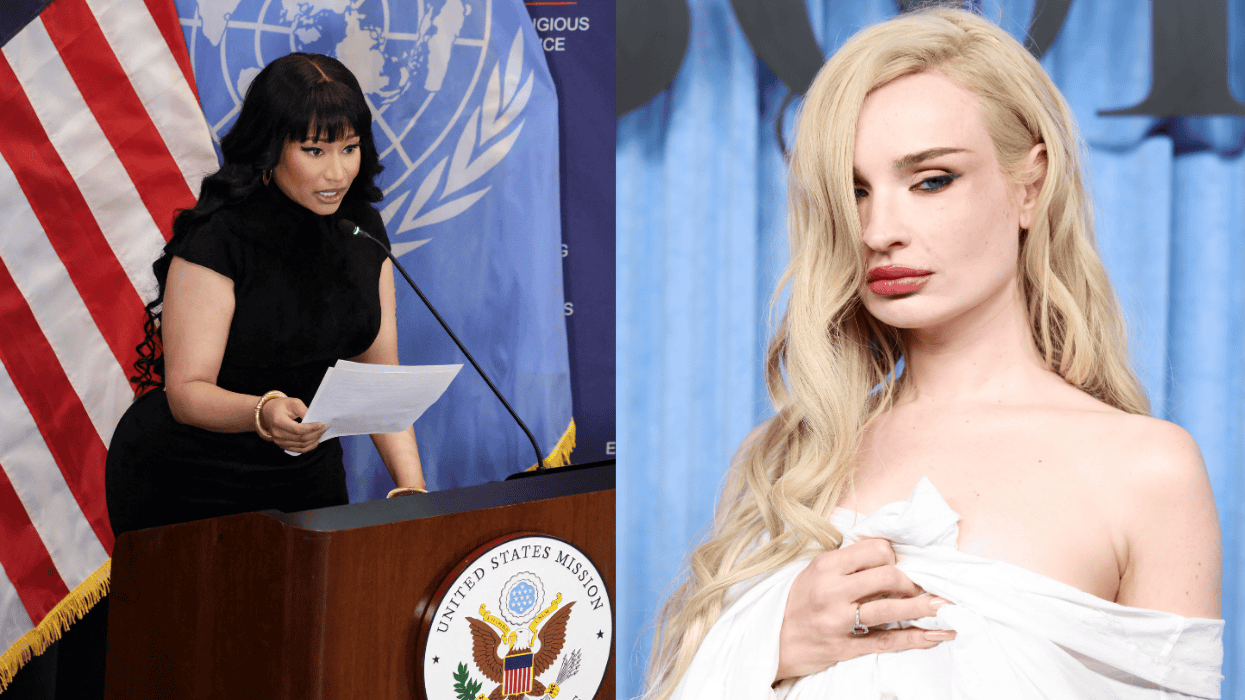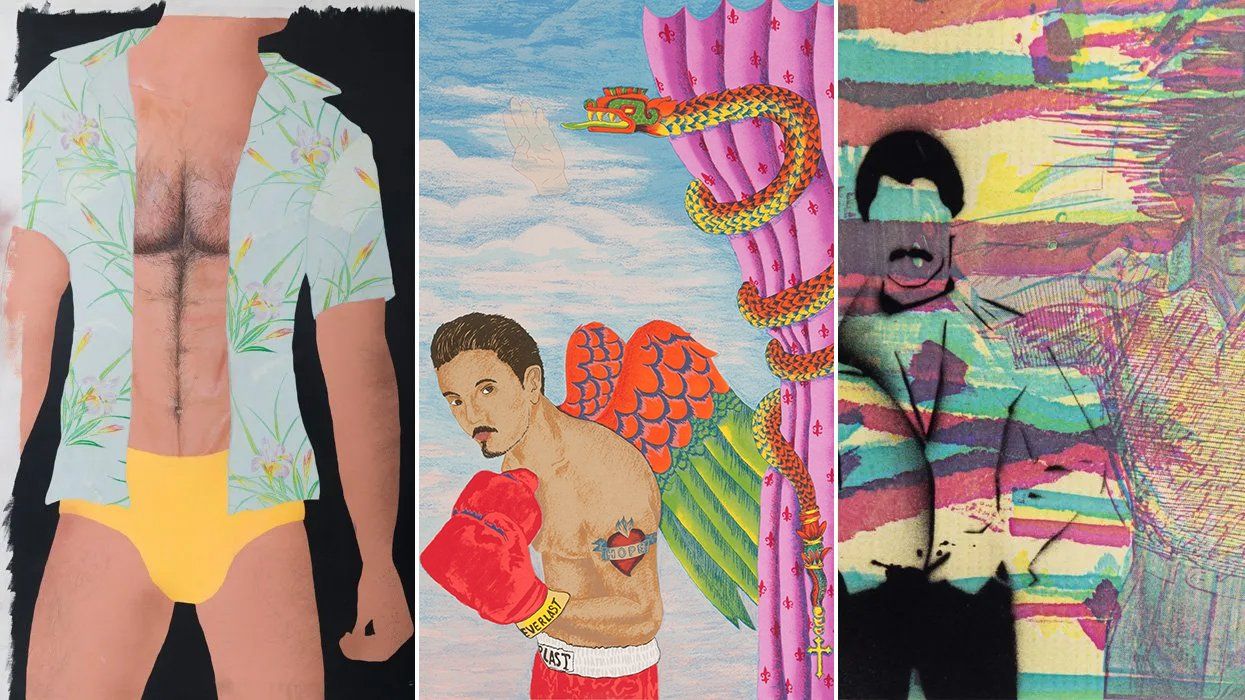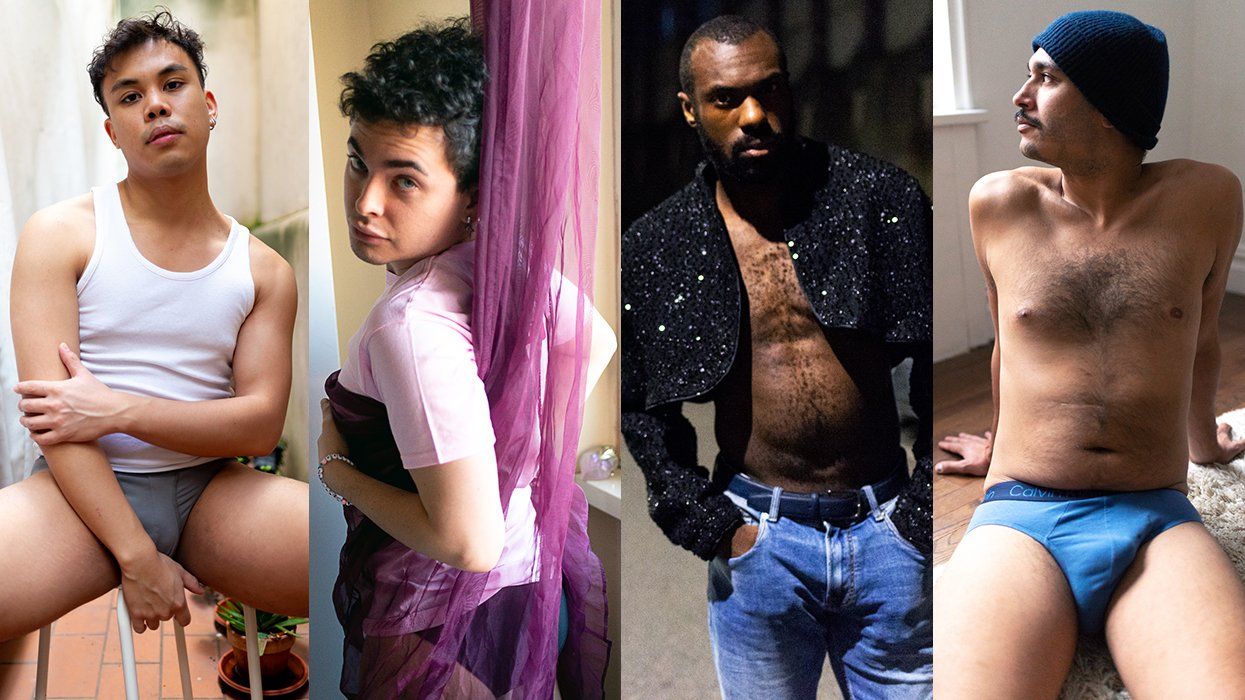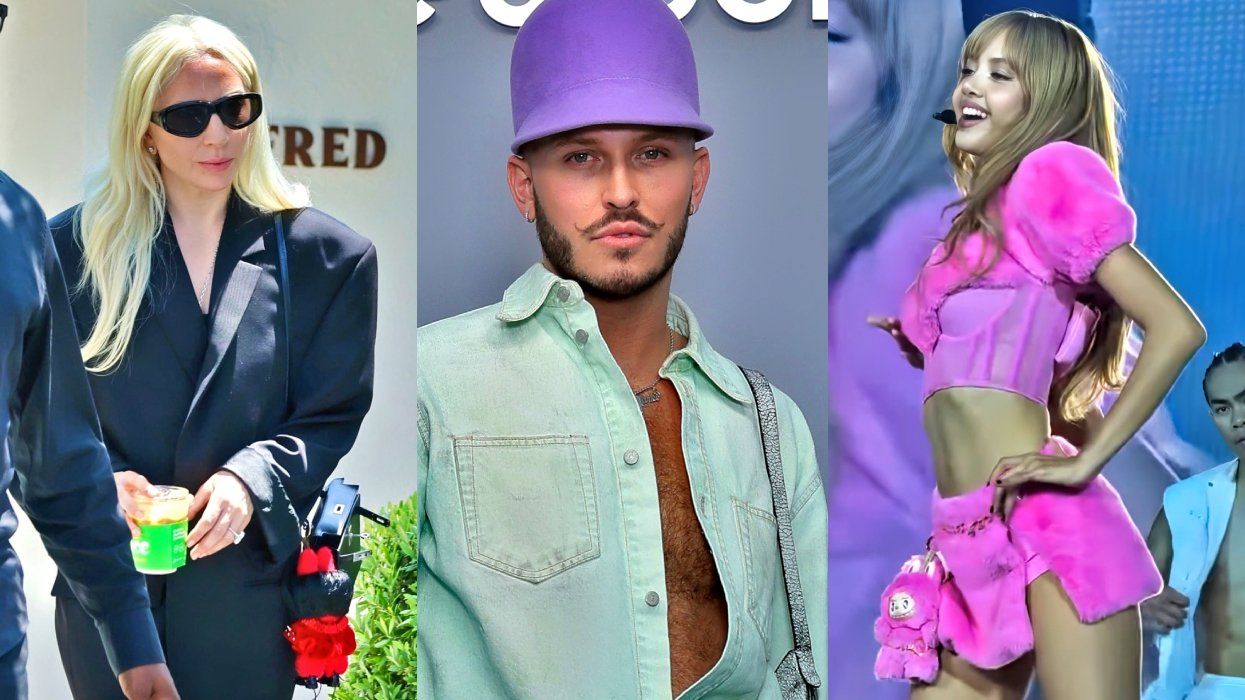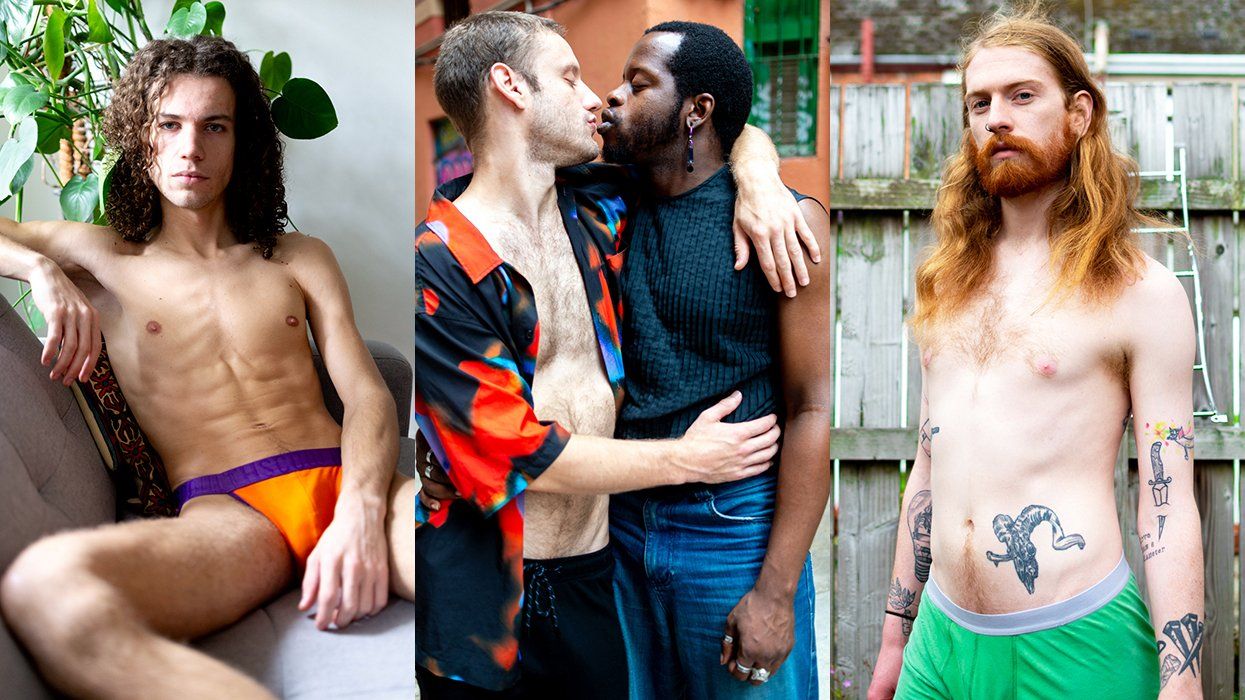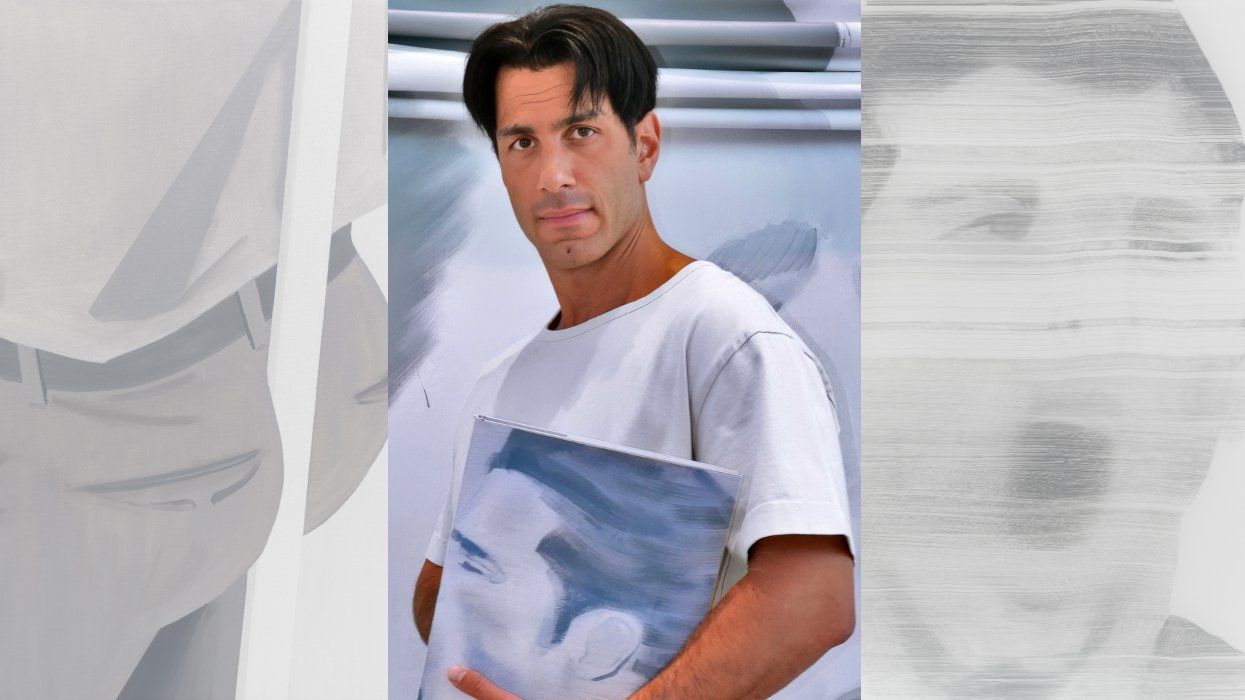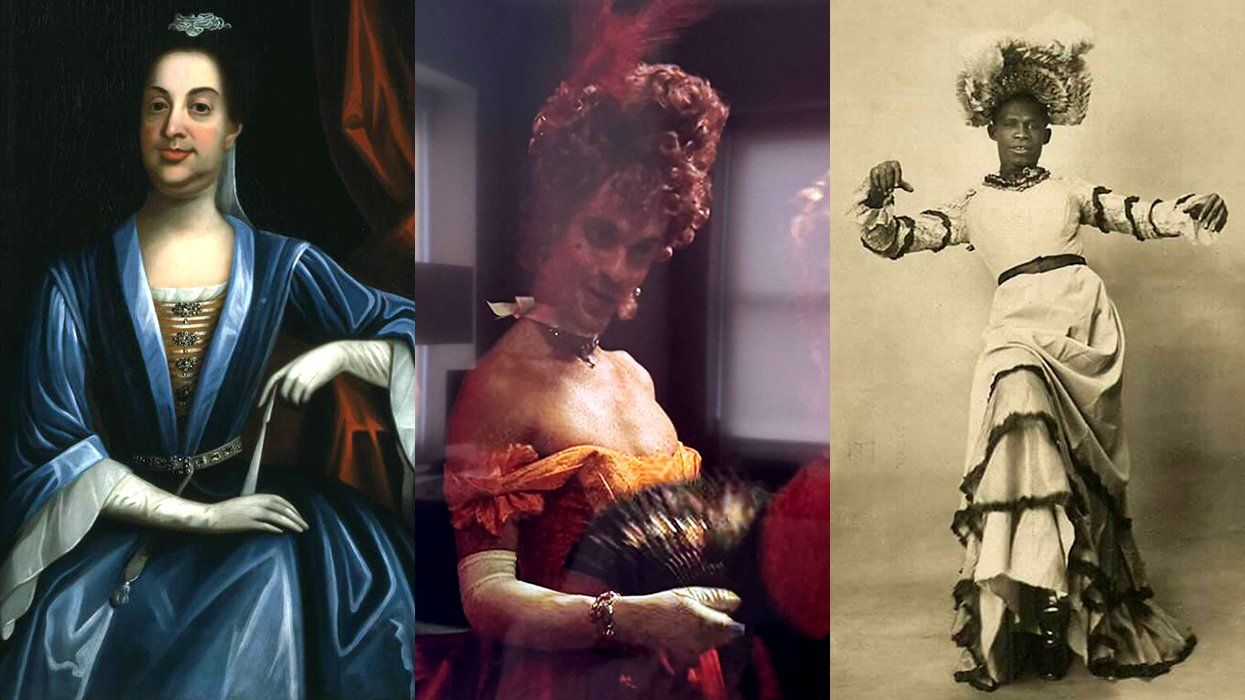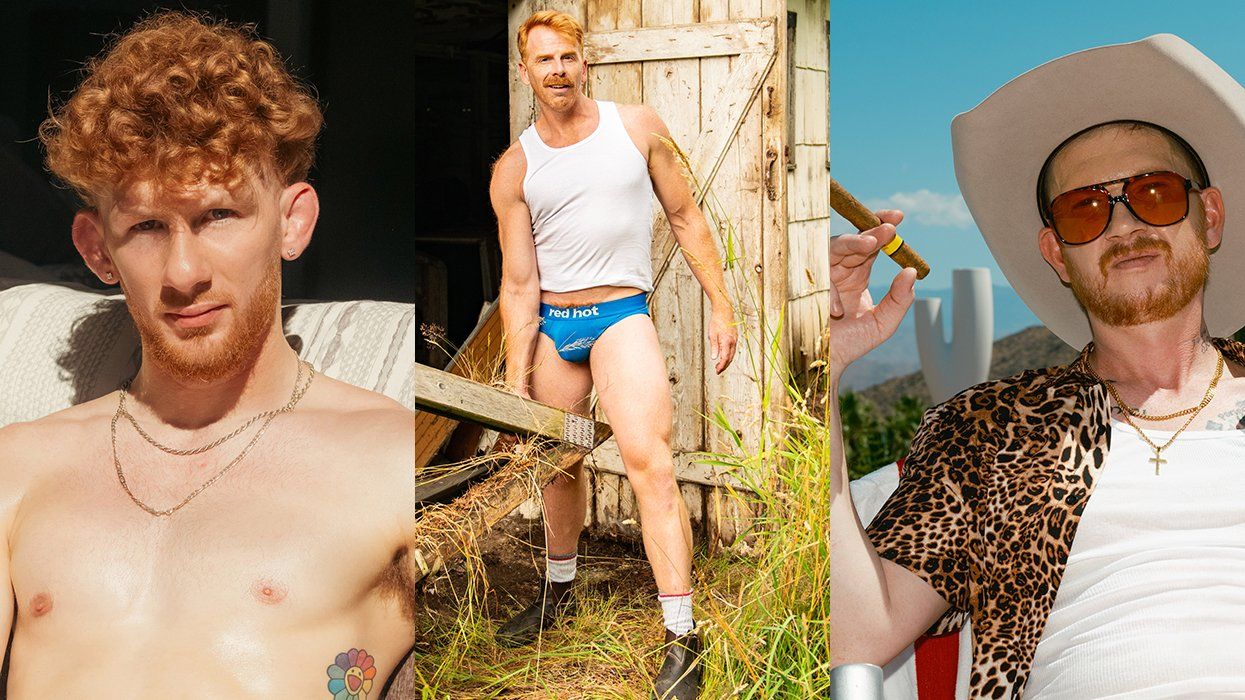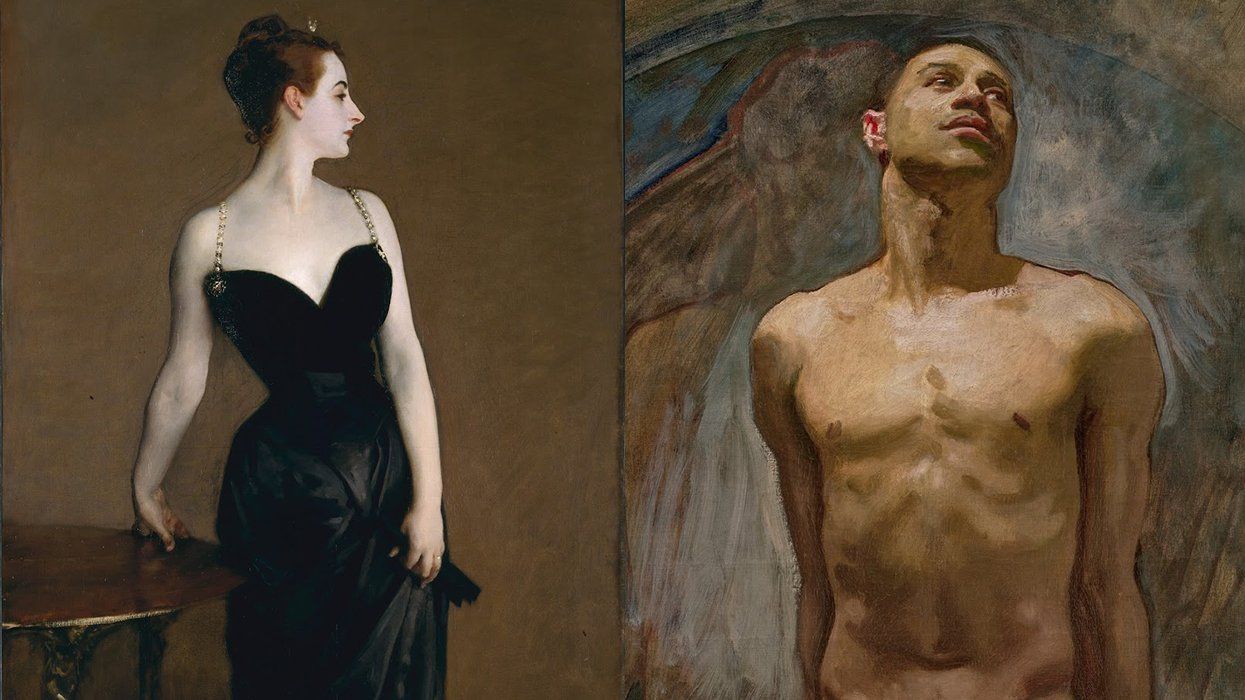When Rio Sofia exhibited her Forced Womanhood! series of self-portraits in her final year as a student at Cooper Union, she braced herself for a backlash. The work, a mix of still and moving images inspired by forced feminization erotica, was too jarring, abrasive, and unrepentantly deviant, she thought, to warrant celebration. To the visual artist's surprise, the school community loved it. The president even personally thanked her for creating it, and the admissions office toured prospective students and their parents through the exhibition space to show how safe the school's students felt to express themselves.
Though positive, the response unsettled Sofia.
"I was just so confused," she says. "I made a body of work that was explicitly critical of trans empowerment narratives, and the institution still found a way to spin it into such a narrative -- and for their own benefit. I wasn't able to make the work because I felt safe at Cooper. The work actually came out despite all of the alienation and insecurity I felt there."
Sofia, born in Queretaro, Mexico, is now 25 years old and living in Brooklyn. We're sitting on the bed of her apartment bedroom, lamplit as she shows me images on her MacBook screen. They're of Forced Womanhood!, the print magazine devoted to forced feminization fantasies and shemale erotica that inspired her own series. I say "shemale" and not something more respectful like "trans woman" or "woman of transgender experience" because the figures rendered on the covers -- all hand-drawn, mixing Tom of Finland airbrushing with Sweet Valley High pastels -- aren't trying to depict either of those groups. They're shemales: a fetishized, pornographic idea of a trans woman produced for men who want to get off on imagining what it might be like if someone made you be a girl. Community knowledge tells me that some of those men will go on to become women themselves one day, but, to paraphrase the title of that Jennifer Finney Boylan memoir I haven't read, she's not there yet.
Rio says that she came across Forced Womanhood! at Purple Passion, a sex toy shop in Manhattan where she worked when she first started transitioning in 2015.
"The mainstream [transfeminine] narrative was shifting, and stories about gender transformation were being seen by people as demonstrations of self-empowerment and liberation," she says. "While narratives of empowerment have their place and are super important in lots of ways, they can often extract the harsher complexities of being trans, flattening our experience. Forced Womanhood! resonated with me because it was telling a different story -- sissies being locked into chastity devices, husbands forced to transition then stuffed into their wives' closets."
Sofia shifts her legs under her, crouching to meet the computer's gaze head on.
"What I was seeing in the magazine was something I wasn't seeing in mainstream trans narratives," she continues. "Gender can be really coercive, and you don't always have agency over the choices you make."
The clandestine imagery in the magazine inspired Sofia to create a self-portrait series, also titled Forced Womanhood! In the still and moving images, she's bound, gagged, and bent over in a tutu. She plays multiple roles in most of the photos: the feminized victim, the dominant feminizer, the Forced Womanhood! subscriber who can't believe what she's reading. In one of the portraits, a nearly still video with a composition evoking Frida Kahlo's The Two Fridas, she sits tied to a chair by a pink rope, wearing nothing but a white lace bra and matching thigh-high stockings. Her mouth is held open by a gag shaped like a pair of red lips, and the rope suspends her genitals as a form of cock-and-ball torture. Five minutes into the video, her legs begin to quiver. It's only then that you realize that the front legs of her chair have been sawn off and that she has been supporting her own weight this whole time -- a form of predicament bondage that, along with the rope tugging her genitals skyward, forces her into holding an endless chair pose to stave off deeper pain. Pulling on the other end of the rope is a more stoic, demure incarnation of Sofia, this one seated in a white prairie dress.
"I wanted to get into this sort of Freudian, psychoanalytic space where all these roles are totally interchangeable despite the power dynamics," Sofia tells me. "I wanted to communicate how that can all happen internally to a single person."
Although the original Forced Womanhood! depicts "Men Transformed into Shemale Slaves by Masters and Mistresses," as many of the covers' taglines read, and not trans women exactly, the transfeminine-adjacent source material did give Sofia something that had thus far eluded her in all of her artistic studies: context -- something to respond to that she felt she could claim as her own.
The Western art canon she'd learned about was made up of great men and a scant number of great women -- most of them white, ostensibly straight, and all of them cisgender. The museums and galleries she went to reinforced this message, as did her classes at Cooper Union, until she fully believed the lie that transfeminine artists didn't exist.
"That's how canons work," says Jeanne Vaccaro, a writer and curator based in New York and Oakland who curated Bring Your Own Body: transgender between archives and aesthetics with Stamatina Gregory in 2016. "They assign value to certain people by withholding it from others. We like to think of art as a refuge from the world, but the art markets are a reflection of that world, which is racist, and transphobic, and driven by capitalism."
Transfeminine people are allowed into the Western art canon, she says, but only as "fetishized or tokenized objects of infatuation or aesthetic fascination." They're muses, not artists: Candy Darling, not Peter Hujar. Recently, the Whitney Museum of Art in New York exhibited Andy Warhol's portrait of Marsha P. Johnson as part of the Andy Warhol -- From A to B and Back Again retrospective, but it's unlikely that they or any comparable institution would organize a similar exhibition devoted solely to the S.T.A.R. revolutionary's work, nor address the reasons why she'd been excluded from the canon thus far -- reasons that continue to exclude transfeminine artists like Johnson to this day.
Sofia tells me that she has taken a step back from creating new work since graduating from Cooper Union, choosing instead to focus on learning about transfeminine artists' work, past and present. Now the programs and operations coordinator for Queer|Art, she is slowly building an archive of transfeminine artists, crowdsourced in large part via Instagram. Sofia's still not sure what she'll do with this canon she's building, but knowing about the work of artists like Jackie Shane, Vaginal Davis, International Chrysis, Greer Lankton, Flawless Sabrina, Justin Vivian Bond, Juliana Huxtable, Effy Beth, Keijaun Thomas, Mark Aguhar, Zackary Drucker, Tourmaline, Tuesday Smillie, January Hunt, and countless others eases her alienation, giving her somewhere to place herself and something to respond to.
"If you don't learn to contextualize your work among other artists, your work won't develop," she says. "Eventually, you'll run out of things to say, or you'll lose sight of the point of creating in the first place. I don't want to do that."
Please visit riosofia.com to view images from the artist's Forced Womanhood! series.
This article appears in Out's May issue featuring artist Zanele Muholi and model Ruth Bell as cover stars. The issue is guest edited by Kimberly Drew. To read more, grab your own copy of the issue on Kindle, Nook, Zinio or (newly) Apple News+ today. Preview more of the issue here and click here to subscribe.



